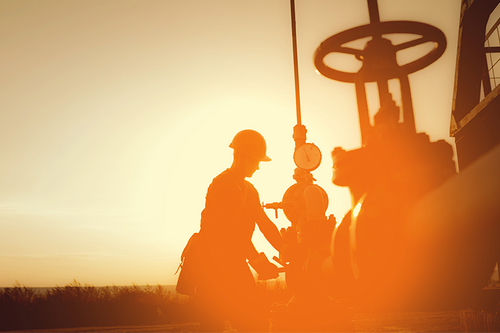Staying Cool in FR Clothing
As we face one of the hottest summers on record, employers need to think critically about how they plan on protecting their workers from heat-related illnesses such as heat stroke and heat exhaustion. According to recent data from the Bureau of Labor Statistics, more than 2,000 workers suffered heat-related illnesses in 2017, and more than 30 people died from heat stroke and heat exhaustion. Most of these incidents occurred between the months of May and September.
If workers need to wear flame resistant clothing in the field, such as those that work in the mining, welding, utility and construction industries, this clothing may increase their body temperature, increasing the risk of heat stroke and heat exhaustion. Heavy or poorly made FR clothing may impair the flow of oxygen, make it more difficult for your employees to move around, or lead to intense sweating and muscle cramps.
As a business owner, you can better protect your employees from heat exhaustion and heat stroke by investing in quality flame resistant clothing, including pieces made with breathable materials like lightweight cotton and those designed for more worker mobility. Learn more about how to stay cool in FR clothing from the safety professionals at PK Safety.
What Kinds of Materials to Look for in Flame Resistant Clothing
When choosing FR clothing for your workers, it’s important to keep them as comfortable as possible. Each piece of clothing should fit the person’s body without clinging to their skin or limiting their range of movement. If the clothing is too baggy or not the right size, your workers may have trouble avoiding flame hazards or removing themselves from hot environments. Under these circumstances, your employees may be less likely to seek shade or move to a cooler environment. If the clothing makes your employees uncomfortable on the job, they will be less likely to wear these items in the field, which increases the chances of fire-related injuries and burns.
To keep your employees comfortable and mobile in the field, look for FR clothing that’s made with lightweight, breathable materials, such as cotton, canvas, or a cotton-nylon blend. Make sure air can move easily through the material, so your employees won’t get as hot on the job. This is especially important if your employees work in hot work environments, such as near ovens, irons, and burners. FR clothing that’s made with these kinds of materials tend to feel and behave just like everyday civilian clothing, so your employees won’t feel constrained or uncomfortable in the field.
The GRIT FR Twill Work Shirt Navy is perfect for those who work in these kinds of environments. It’s made with an 88% Sateen Cotton /12% Nylon blend that keeps the air flowing. It weighs just 2.5 pounds, so your employees can stay light on their toes when completing various tasks in the field. Pair it with the GRIT FR Carpenter Pants Green Duck for below-the-belt FR protection. They’re made with the same lightweight materials for more movement on the job. Your employees can quickly go from one site to another without getting too hot or tripping on their FR clothing.
Protecting Workers from Heat Stroke and Heat Exhaustion
To avoid heat-related illnesses, you and your employees should be aware of the signs of heat exhaustion and heat stroke. According to the Centers for Disease Control and Prevention, the symptoms of heat stroke include:
- A body temperature of 103°F or higher
- Hot, red, dry, or damp skin
- Fast, strong pulse
- Headache
- Dizziness
- Nausea
- Confusion
- Fainting or losing consciousness
If you notice one of your employees exhibiting some of these symptoms, you should call 9-1-1 right away and take steps to lower their body temperature. Move them to a cooler place, such as the shade or an air-conditioned room. Use cool cloths on their body or give them a cool bath. However, refrain from giving the person anything to drink.
Symptoms of heat exhaustion include:
- Heavy sweating
- Cold, pale, and clammy skin
- Fast, weak pulse
- Nausea or vomiting
- Muscle cramps
- Tiredness or weakness
- Dizziness
- Headache
- Fainting or losing consciousness
In this situation, move the person to a cool place, loosen their clothing, and put cool cloths on their skin. Give them some cool, but not ice-cold, water to sip. If the person is throwing up, their symptoms get worse, or their symptoms last longer than one hour, call for medical help right away.
Your employees should never have to choose between staying cool and exposing themselves to fire-related hazards. Your workers should always keep their flame resistant clothing on when working near potential hazards. If their body temperature starts to rise, move them to a cool place and follow the instructions above instead of removing their FR clothing and exposing them to these hazards.
For more information about flame resistant clothing and the latest apparel options, contact PK Safety and place your order today!
Sources:
https://publicintegrity.org/workers-rights/worker-health-and-safety/extreme-heat-post-worker-health/
Recent Posts
-
Customizing Gas Detectors: Tailoring Solutions to Fit Your Unique Requirements
In today’s diverse industrial landscape, a one-size-fits-all approach to safety simply doesn’t cu …Jul 3rd 2024 -
10 Ways to Prevent Wildfires
You can prevent wildfires by extinguishing flames before you leave the worksite. Avoid practicing …Jul 1st 2024 -
ANSI/ISEA 138 Safety Gloves: Ensuring Hand Protection
The human hand is an anatomical masterpiece and arguably the greatest tool attached to our bodies …Jun 25th 2024





